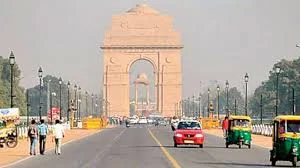
Delhi, the capital of India, has a strong historical background. It was ruled by some of the most powerful emperors in Indian history. The citys history is as old as the epic Mahabharata. The city was known as Indraprastha, where Pandavas used to live. In time, eight more cities came to life besides Indraprastha: Lal Kot, Siri, Dinpanah, Quila Rai Pithora, Ferozabad, Jahanpanah, Tughlakabad, and Shahjahanabad. Delhi has witnessed the political turmoil for more than five centuries. It was ruled by the Mughals in succession to Khiljis and Tughlaqs. In 1192, the legions of the Afghan warrior Mohammed of Ghori conquered the city of Rajput and the Sultanate of Delhi was established (1206). The invasion of Delhi by Timur in 1398 ended the sultanate; the Lodis, the last of the Delhi sultans, gave way to Babur, who founded the Mughal Empire after the Battle of Panipat in 1526. The early Mughal emperors preferred Agra as their capital, and Delhi became their permanent seat only after Shah Jahan (1638) built the walls of Old Delhi.
From Hindu kings to Muslim sultans, the reins of the city kept shifting from one ruler to another. The soil of the city smells of blood, sacrifices and love for the nation. The old Havelis and buildings from the past stand still, but their silence also speaks volumes to their owners and people who lived here centuries ago. In the year 1803 AD the city came under British rule. In 1911 the British moved their capital from Calcutta to Delhi. It once again became the center of all administrative activities. But the city has a reputation for throwing its residents off its throne. It included the British and current political parties who have had the honor of running free India. After independence in 1947, New Delhi was officially declared the capital of India.

